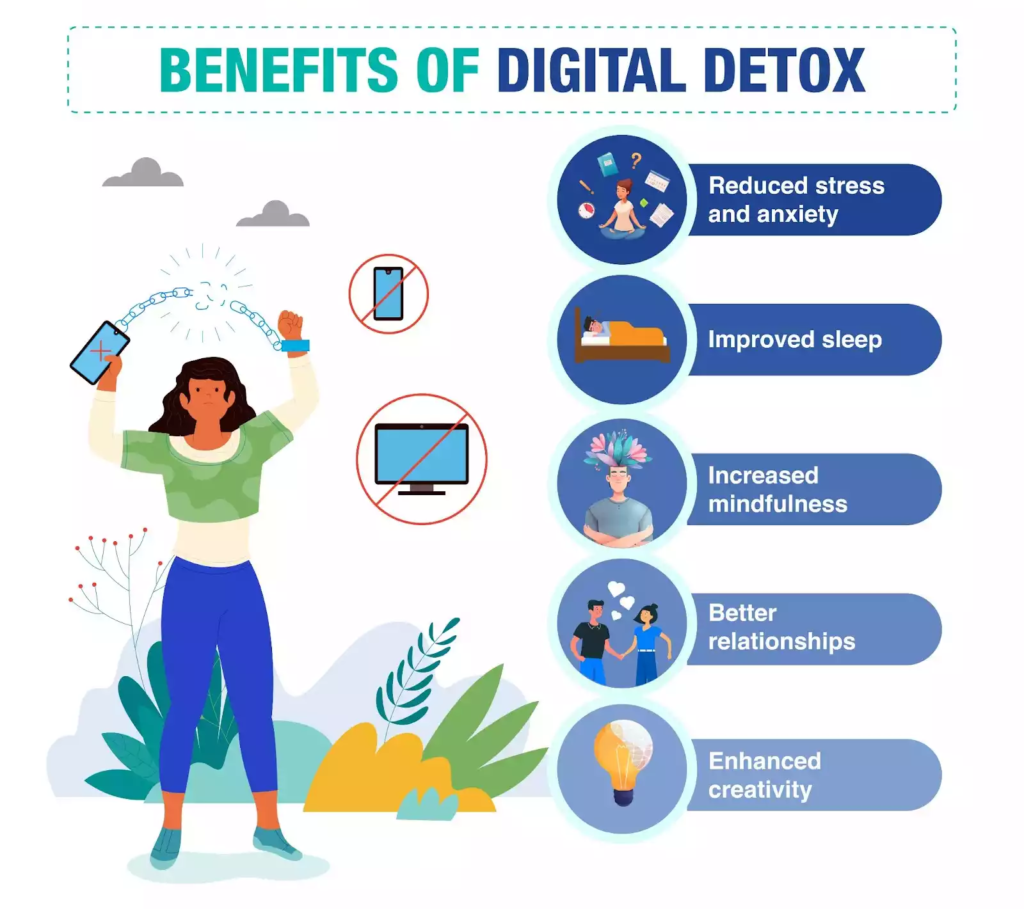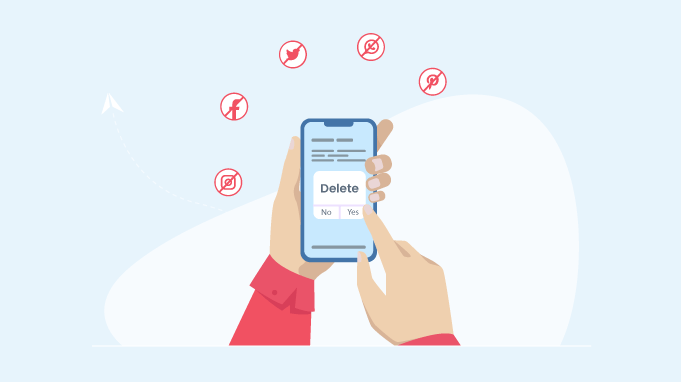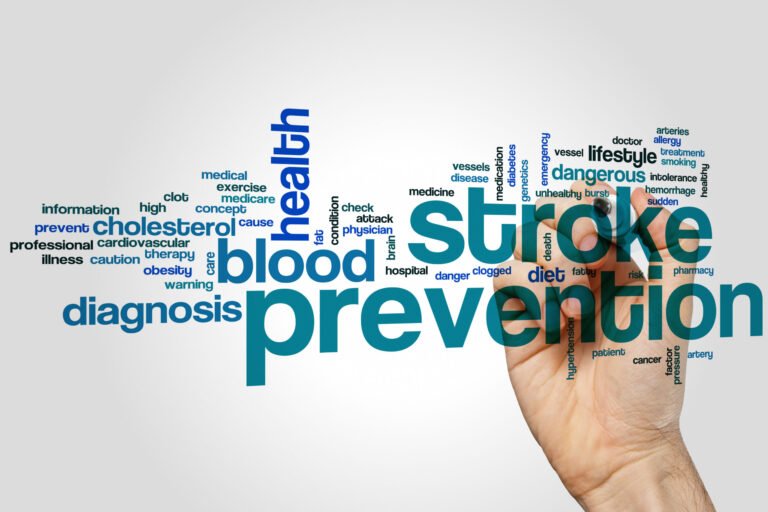Tech Detox: Why Taking a Break from Screens is the Best Thing You Can Do Today
Tech Detox: In today’s digital age, screens dominate our lives. From the moment we wake up to the time we go to bed, we are constantly plugged in—whether it’s working on our computers, scrolling on our smartphones, or binge-watching our favorite shows. In fact, the average person spends over 7 hours a day on screens, equivalent to a full-time job! This relentless exposure is taking a toll, leading to what experts call “digital fatigue.” The signs are everywhere—sleepless nights, chronic headaches, and a feeling of being perpetually overwhelmed. If this sounds familiar, it might be time for a tech detox. A deliberate break from screens could be the best thing you do for your mental, physical, and emotional well-being.
Are You Burnt Out? Here’s How to Tell
Tech burnout is real, and it’s affecting more people than ever before. But how can you tell if you need a break? Here are some common signs:
- Eye Strain and Headaches: Spending countless hours staring at screens can lead to digital eye strain, also known as Computer Vision Syndrome. Symptoms include dry eyes, blurred vision, and persistent headaches.
- Sleep Disturbances: The blue light emitted from screens suppresses melatonin, the hormone responsible for regulating sleep. As a result, many of us find ourselves tossing and turning at night, unable to switch off our minds after a day of digital overload.
- Increased Stress and Anxiety: Constant notifications, endless emails, and the pressure to always be available contribute to heightened stress levels. According to Dr. Natasha Burgert, a pediatrician and digital wellness advocate, “Our brains aren’t wired to be constantly on. The overload of information and the expectation of immediate responses can keep our stress hormones elevated.”
- Decreased Attention Span: Struggling to focus on simple tasks? You’re not alone. Excessive screen time can reduce attention spans, making it harder to concentrate and be productive.
- Social Isolation: While screens are meant to keep us connected, they often do the opposite. We may find ourselves feeling lonelier than ever, spending more time with our devices than with real people.
The Benefits of a Tech Detox: Reconnect with Yourself and the World Around You
A tech detox doesn’t mean abandoning technology entirely—it’s about finding balance and setting boundaries. Here are some powerful benefits you can experience:

- Improved Mental Health: A break from screens can significantly reduce anxiety and stress. A study from the University of Pennsylvania found that limiting social media use reduced feelings of loneliness and depression in participants. Read more about the study here.
- Better Sleep Quality: Reducing screen time, particularly before bedtime, helps improve sleep quality. Without the interference of blue light, your body can naturally produce melatonin, leading to more restful sleep.
- Enhanced Focus and Productivity: Disconnecting from digital distractions allows your brain to reset, making it easier to concentrate on tasks without the constant pull of notifications.
- Stronger Relationships: Being present in your relationships is one of the most rewarding aspects of a tech detox. Whether it’s enjoying a meal with family or catching up with friends, real-life interactions feel more meaningful.
- Physical Health Benefits: Less screen time often translates to more physical activity, reducing the risk of conditions like obesity and promoting overall wellness. Plus, you’ll experience fewer headaches and less eye strain.
Actionable Steps to Start Your Tech Detox Today
Ready to unplug? Here are practical steps to kickstart your tech detox journey:
- Set Screen-Free Zones and Times: Designate areas in your home as screen-free, like the bedroom or dining table. Establish tech-free times, such as during meals or an hour before bedtime, to help you disconnect gradually.
- Schedule Digital Downtime: Set aside specific times each day to disconnect, like spending the first hour of your morning tech-free or dedicating weekends to outdoor activities. This simple shift can drastically change how you feel.
- Turn Off Non-Essential Notifications: Constant notifications make it hard to disconnect. Go through your apps and turn off unnecessary alerts, so you’re not constantly pulled back into the digital world.
- Engage in Offline Activities: Rediscover hobbies that don’t involve screens—read a physical book, cook a new recipe, garden, or take a walk. Engaging in these activities can help you unwind and recharge.
- Use Apps Wisely: Ironically, some apps can help you reduce screen time. Apps like “Forest” and “Moment” encourage users to stay off their phones by providing rewards for time spent away from screens.
- Set Boundaries for Work: If you work remotely or your job requires heavy screen use, set clear boundaries. Avoid checking emails after work hours and use “Do Not Disturb” settings on your devices.
- Practice Mindfulness: Techniques like meditation or deep breathing can help center your mind and reduce the urge to check your phone. Dr. Jennifer Taitz, a clinical psychologist, suggests, “Mindfulness practices can help you become more aware of your screen habits and make conscious choices about when to engage.”

Expert Insight: Why a Tech Detox Matters
According to Dr. Sherry Benton, founder of TAO Connect, a digital wellness platform, “We live in a society where there is an overwhelming expectation to be constantly connected. This relentless digital exposure has a significant impact on our mental health. A tech detox is not just a luxury; it’s becoming a necessity.”
Digital fatigue is undeniable, but with intentional breaks and conscious efforts to disconnect, you can reclaim your time, energy, and overall well-being.
Final Thoughts: Unplug to Reconnect
Taking a tech detox might seem daunting, especially in a world that thrives on screens. However, by setting boundaries and making small adjustments, you can experience the immense benefits of disconnecting from digital overload. The goal isn’t to eliminate technology but to use it more mindfully, ensuring a healthy balance between the online and offline worlds.
Ready to start your tech detox? Give it a try today and share your experience in the comments below. You might just find that the best connection is the one you make with yourself.
For more visit






